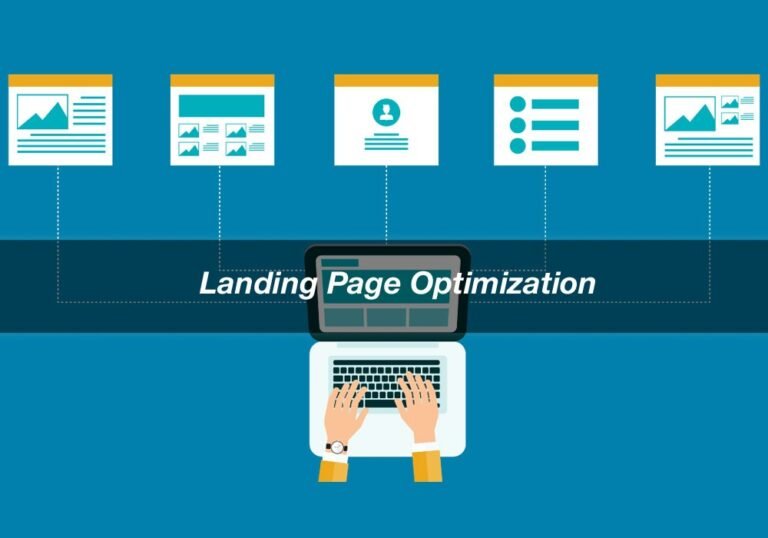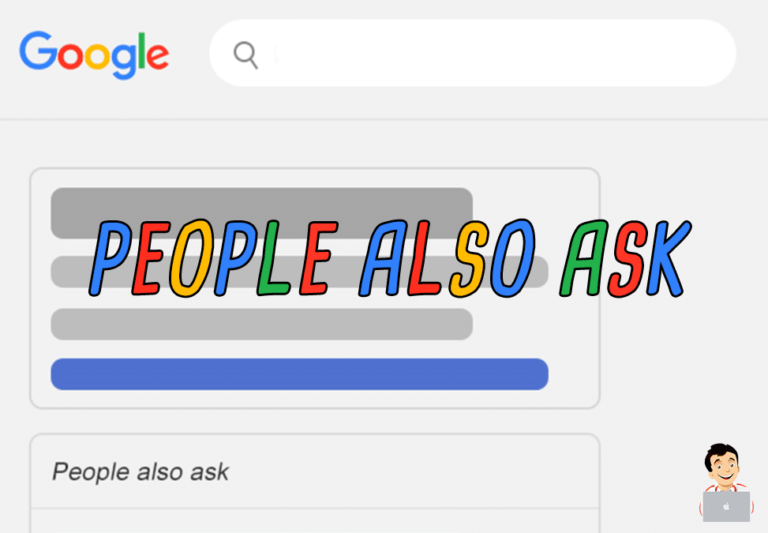Top 5 Content Creation Mistakes (And How to Fix Them)
Content creation isn’t just about writing words on a page. If it were that easy, every blog, article, and webpage would be ranking at the top of Google. But that’s not the case.
Most content fails because it doesn’t align with search intent, topical authority, and user expectations. Writers often focus on keywords rather than the semantic meaning behind those words. Search engines, especially Google, have evolved. They no longer just match queries to exact keywords—they look at entities, relationships, and context to determine relevance.

This is where Holistic SEO comes into play. Instead of just stuffing keywords, it focuses on:
✅ Search intent optimization – Does the content answer what the user is truly looking for?
✅ Entity-based optimization – Are you covering the right topics, subtopics, and related concepts?
✅ Content depth and structure – Does your article provide a full knowledge experience or just surface-level fluff?
If your content isn’t structured for Semantic Search, it won’t just struggle to rank—it will also fail to engage users. And when users bounce off your page within seconds? Google takes that as a signal that your content isn’t useful.
This post is about fixing those mistakes. We’ll go through the top 5 content creation mistakes that might be killing your rankings and engagement—and, more importantly, how to fix them.
Mistake #1: Not Structuring Content for Semantic Search
Most content creators still approach SEO with a keyword-first mindset, focusing on individual search terms rather than the relationships between them. This outdated method ignores how search engines actually process information.
Google’s algorithm doesn’t just scan for keywords anymore. It uses Natural Language Processing (NLP) and entity-based indexing to understand how different topics, concepts, and entities relate to each other.
If your content lacks semantic depth, it won’t rank well, even if it’s optimized for the right keywords. Without proper contextual connections, search engines won’t see your content as authoritative or relevant enough to satisfy a user’s query.
How to Fix It
1. Use Entity-Based Optimization
Instead of just targeting a keyword like “content creation,” think in terms of related entities. Google connects topics through a Knowledge Graph, meaning it understands that “content marketing,” “SEO copywriting,” and “user engagement strategies” all relate to content creation.
- Identify primary and secondary entities using tools like Google NLP API, InLinks, or Kalicube.
- Structure your content to include closely related topics and subtopics to improve topical authority.
- Use LSI (Latent Semantic Indexing) keywords and co-occurring terms to enhance contextual relevance.
2. Build a Topical Cluster Strategy
Google ranks topical authority, not just isolated pages. If you only have a single article on “content creation,” it lacks contextual weight. Instead, create a content cluster around the topic.
- Write a pillar article on “Content Creation Strategies.”
- Link it to supporting articles, such as “SEO Copywriting Best Practices,” “How to Improve User Engagement,” and “Content Distribution Strategies.”
- Interlink these pages strategically to show semantic relationships between them.
3. Optimize for NLP & Semantic Search
Search engines process content based on sentence structure, entity relationships, and contextual meaning. Ensure your content is:
- Well-structured: Use clear headings, bullet points, and concise paragraphs to improve readability.
- Semantically rich: Write naturally, avoiding keyword stuffing while using synonyms and variations of key terms.
- Query-focused: Answer multiple search intents within the same article, addressing informational, navigational, and transactional queries.
If your content is just a collection of keywords, it will struggle to rank. Search engines prioritize depth, connections, and structure. By optimizing for entities, topical clusters, and NLP processing, you’ll improve your content’s visibility and authority.
Mistake #2: Ignoring User Intent and Search Journeys
One of the biggest mistakes in content creation is focusing on keywords without considering why users are searching for them. Search engines prioritize user intent, and if your content doesn’t align with what people actually need, it won’t rank—or worse, it will drive users away.
Every search query has an intent behind it. Google’s goal is to deliver the most relevant result based on whether a user is looking for information, comparing options, or ready to take action. If your content doesn’t match that intent, search engines will push it down in rankings.
For example:
- Someone searching “how to write engaging content” wants a guide or tutorial, not a sales pitch for a content writing tool.
- A search for “best SEO writing tools” signals a comparative intent, meaning list-based content would perform better than a deep-dive guide.
- The query “buy AI content writing software” suggests a transactional intent, where users expect product pages or pricing information.
If your content doesn’t align with what the user actually wants, they’ll leave—leading to high bounce rates and low dwell time, which negatively impact rankings.
How to Fix It
1. Identify the Three Main Types of Search Intent
Every piece of content should be built with a clear understanding of what the user expects to find.
- Informational Intent – The user wants knowledge.
- Example queries: “What is content marketing?”, “How does SEO work?”
- Best content type: Guides, tutorials, long-form educational content.
- Navigational Intent – The user is looking for a specific website or resource.
- Example queries: “Ahrefs pricing”, “Moz blog”, “Google SEO guidelines”
- Best content type: Landing pages, branded content, direct navigation pages.
- Transactional/Commercial Intent – The user is ready to take action.
- Example queries: “Best AI writing tool 2024”, “Buy SEO content services”
- Best content type: Product pages, case studies, pricing comparisons, reviews.
2. Analyze Search Engine Results Pages (SERP) Before Writing
Google already tells you what kind of content performs best for each query. Before creating content, look at:
- The top-ranking results – Are they guides, lists, product pages, or opinion pieces?
- Featured snippets and People Also Ask (PAA) boxes – These show common questions users have around the topic.
- Related searches at the bottom of Google – These provide insights into secondary intent and long-tail variations.
3. Align Your Content With the User’s Search Journey
Users don’t just search once. They follow a journey, moving from awareness to decision-making. Your content should align with different stages of this journey:
| Search Journey Stage | User Query Example | Best Content Type |
|---|---|---|
| Awareness | “What is holistic SEO?” | Informational blog post, explainer video |
| Consideration | “Holistic SEO vs traditional SEO” | Comparison guide, pros and cons article |
| Decision | “Best holistic SEO courses” | Listicle, case studies, product reviews |
| Action | “Buy holistic SEO audit service” | Service page, pricing page |
If your content only covers one stage, you risk losing users before they convert.
Writing content without matching search intent is like trying to sell ice to someone who’s looking for hot coffee. It doesn’t work. The more precisely you align your content with user intent, the better your chances of ranking, engaging users, and driving conversions.
Mistake #3: Writing for Algorithms Instead of People
A common mistake in content creation is focusing too much on SEO tactics and forgetting the human reader. While keywords, meta tags, and structured data are important, Google’s ultimate goal is to rank content that provides real value to users.
If your content sounds robotic, stuffed with keywords, or lacks engagement, both readers and search engines will ignore it.
Why This Is a Problem

Digital Marketing Consultant
Google’s Natural Language Processing (NLP) algorithms—like BERT and MUM—can now understand context, sentence structure, and user engagement metrics. This means:
- Content that prioritizes keyword stuffing over natural readability gets flagged as low-quality.
- Long, dense paragraphs with no structure make users bounce quickly.
- Lack of engagement signals (low time on page, high bounce rates) tells search engines that people aren’t finding value in your content.
In short, if your content is hard to read or feels unnatural, it won’t rank—no matter how well it’s optimized for SEO.
How to Fix It
1. Write Like You’re Talking to a Person
SEO content doesn’t have to be stiff or overly technical. It should be conversational, engaging, and easy to digest.
- Use short, clear sentences to improve readability.
- Avoid excessive jargon unless your audience expects it.
- Break up long sections with bullet points, headers, and visuals to make content scannable.
- Add examples, case studies, or storytelling elements to keep readers engaged.
A simple test: Read your content out loud. If it sounds awkward or unnatural, rewrite it.
2. Optimize for UX Signals, Not Just Keywords
Google measures how users interact with your page to determine content quality. Focus on improving:
- Time on Page: Make your content engaging enough that users stay longer.
- Scroll Depth: Ensure your formatting and structure encourage readers to keep scrolling.
- Click-Through Rate (CTR): Use compelling titles and meta descriptions that match user expectations.
Adding interactive elements (like infographics, videos, or embedded tweets) can also improve engagement and dwell time.
3. Use Google’s NLP API to Improve Content Quality
Google’s Natural Language Processing API can analyze text for:
- Sentiment: Does your content sound natural and helpful?
- Entities & Relevance: Are you covering the right topics and relationships?
- Readability & Clarity: Is your writing structured in a way that makes sense?
You can use tools like SurferSEO, Clearscope, or Frase to ensure your content is optimized for both SEO and human readability.
Search engines don’t buy products, subscribe to newsletters, or share content—people do. Instead of obsessing over keywords, focus on helping, educating, or entertaining your audience.
When users find your content valuable, Google rewards it naturally.
Mistake #4: Neglecting Content Depth and Topical Authority
Many content creators make the mistake of only scratching the surface of a topic. If your content doesn’t fully cover a subject, Google won’t see it as authoritative, and users won’t find it useful enough to stay engaged.
Google ranks content based on topical authority, not just keywords. If your article barely touches on a topic, it won’t be considered a comprehensive resource.
- Shallow content fails to rank for multiple search queries, limiting its visibility.
- If users don’t find all the answers they need, they’ll leave your page and look elsewhere.
- Without contextual depth, your content won’t be seen as authoritative by search engines.
Search engines favor content that fully satisfies user queries by providing:
- Detailed explanations
- Contextual relationships between subtopics
- Supporting evidence (case studies, data, examples)
If your content doesn’t provide a complete knowledge experience, it won’t rank well—no matter how well-optimized it is.
How to Fix It
1. Expand Your Content With Subtopics and Related Questions
Google expects content to go beyond basic definitions and provide a comprehensive breakdown of a topic.
- Use People Also Ask (PAA) questions in Google to find related user queries.
- Check Google’s Related Searches at the bottom of the SERP to see what users look for.
- Use tools like AlsoAsked, AnswerThePublic, and Keyword Insights to identify deeper subtopics.
For example, if you’re writing about “SEO Copywriting,” don’t just define it. Cover:
- Best SEO copywriting techniques
- Common mistakes and how to avoid them
- Tools to improve SEO content
- Real-world case studies
By covering multiple angles, you create content that’s more valuable and more likely to rank.
2. Build a Content Silo and Internal Linking Strategy
Google ranks sites based on topical relevance—not just single posts. If you have only one piece of content on a subject, it won’t establish authority.
- Create content clusters: A main pillar post (broad topic) should link to supporting articles (specific subtopics).
- Use internal linking to connect related pieces and help Google understand topic relationships.
- Avoid orphaned content, every piece should be linked to a relevant, higher-level page.
For example, a pillar page on Content Marketing should link to:
- A guide on creating high-converting content
- An article on SEO content optimization
- A list of the best content marketing tools
This structure strengthens topical authority and makes it easier for search engines to index your content properly.
3. Use Data, Examples, and Case Studies to Add Depth
Shallow content lacks credibility. Adding real-world examples, case studies, or industry data makes content:
- More authoritative
- More trustworthy
- More engaging
Instead of making vague claims like “SEO improves website traffic,” show real data:
- “According to a study by Backlinko, the first result in Google gets 31.7% of all clicks, while the tenth result gets only 2.5%.”
Providing evidence and real insights increases both user trust and SEO performance. If your content doesn’t thoroughly answer user queries, it won’t rank. Google favors pages that fully explore a topic, connect related ideas, and keep users engaged.
Mistake #5: Not Optimizing for Featured Snippets and Zero-Click Searches
Many content creators overlook the importance of featured snippets, People Also Ask (PAA) results, and zero-click searches. These search elements dominate the top of Google’s results, and if your content isn’t optimized for them, you’re missing out on valuable organic visibility.
Google is shifting towards zero-click search results, where users get answers directly on the search page instead of clicking on a website. If your content doesn’t appear in these high-visibility areas, your competitors will take the traffic instead.
- Featured snippets (position #0) get a significant share of clicks.
- PAA boxes answer related questions and encourage further exploration.
- Voice search results often come from featured snippets.
If your content isn’t structured to capture these spots, you’re losing traffic before users even visit your page.
How to Fix It
1. Structure Content for Featured Snippets
Google pulls featured snippets from content that is clear, concise, and well-structured. The most common formats include:
- Paragraph snippets (short, direct answers)
- List snippets (step-by-step guides or best-of lists)
- Table snippets (comparison data)
To optimize your content:
- Identify high-ranking queries with featured snippets using tools like SEMRush, Ahrefs, or Google Search Console.
- Answer questions in 40-60 words immediately after relevant headers.
- Use bolded keywords and structured formatting to improve readability.
For example, if optimizing for “What is SEO Copywriting?”, write:
What is SEO Copywriting?
SEO copywriting is the practice of writing content optimized for search engines while maintaining readability for users. It involves keyword optimization, structuring content for intent, and improving engagement to rank higher in search results.
This concise, definition-style response increases your chances of appearing in a snippet.
2. Optimize for People Also Ask (PAA) Results
Google’s People Also Ask (PAA) box appears for most search queries and provides related questions. Ranking in these results increases visibility without needing position #1.
To improve your chances:
- Include FAQ sections at the end of your article.
- Use question-based H2 and H3 headers.
- Provide direct, well-structured answers that lead into a deeper explanation.
For example:
How does content depth impact SEO?
Content depth impacts SEO by increasing topical authority, improving engagement, and answering multiple user queries within a single page. Google favors in-depth content that fully satisfies search intent.
3. Use Schema Markup to Stand Out in SERPs
Structured data helps Google understand your content format. Implement:
- FAQ Schema to increase the chances of ranking in PAA boxes.
- How-To Schema for step-by-step guides.
- Article Schema to improve ranking in Google News and Discover.
Schema markup makes your content more clickable and visually appealing in search results.
If your content isn’t structured for snippets, PAA, and voice search, you’re leaving a massive SEO opportunity on the table. The goal is to be the answer Google chooses: which increases brand authority, visibility, and organic traffic.
Final Thoughts
Content creation isn’t just about writing well, it’s about writing smart. Many creators unknowingly sabotage their content by failing to align with search intent, neglecting topical depth, and overlooking user experience. These mistakes lead to low rankings, poor engagement, and missed traffic opportunities.

But the good news? Each of these mistakes is fixable with the right approach.
Key Takeaways:
✅ Structure content for semantic search – Focus on entities, related topics, and knowledge graphs, not just keywords.
✅ Match user intent – Understand whether a query is informational, navigational, or transactional, and create content accordingly.
✅ Write for humans first, algorithms second – Google rewards engaging, easy-to-read, and well-structured content.
✅ Go deep, not just wide – Cover topics comprehensively to establish topical authority and rank for multiple queries.
✅ Optimize for featured snippets and zero-click searches – Structure content for quick answers, PAA results, and voice search visibility.
Next Steps: How to Improve Your Content Strategy
- Audit your existing content – Identify gaps in depth, structure, and intent alignment.
- Implement a content cluster strategy – Build pillar pages and supporting articles to improve topical authority.
- Analyze SERPs before writing – Let Google show you what type of content works best for each query.
- Test for readability and engagement – Make sure your content is structured, scannable, and easy to digest.
- Monitor and refine – Use tools like Google Analytics, Search Console, and NLP APIs to see what’s working and improve over time.

Rock Content
SEO isn’t just about rankings, it’s about delivering the most valuable, relevant content possible. When you focus on semantic relationships, user intent, and content quality, both search engines and readers will reward you.
Are you making any of these content mistakes? What’s your biggest challenge in content creation? Let’s discuss in the comments. ⬇️
Disclosure: Our blog contains affiliate links to products. We may receive a commission for purchases made through these links. However, this does not impact our reviews and comparisons. We try our best to keep things fair and balanced, in order to help you make the best choice for you.







